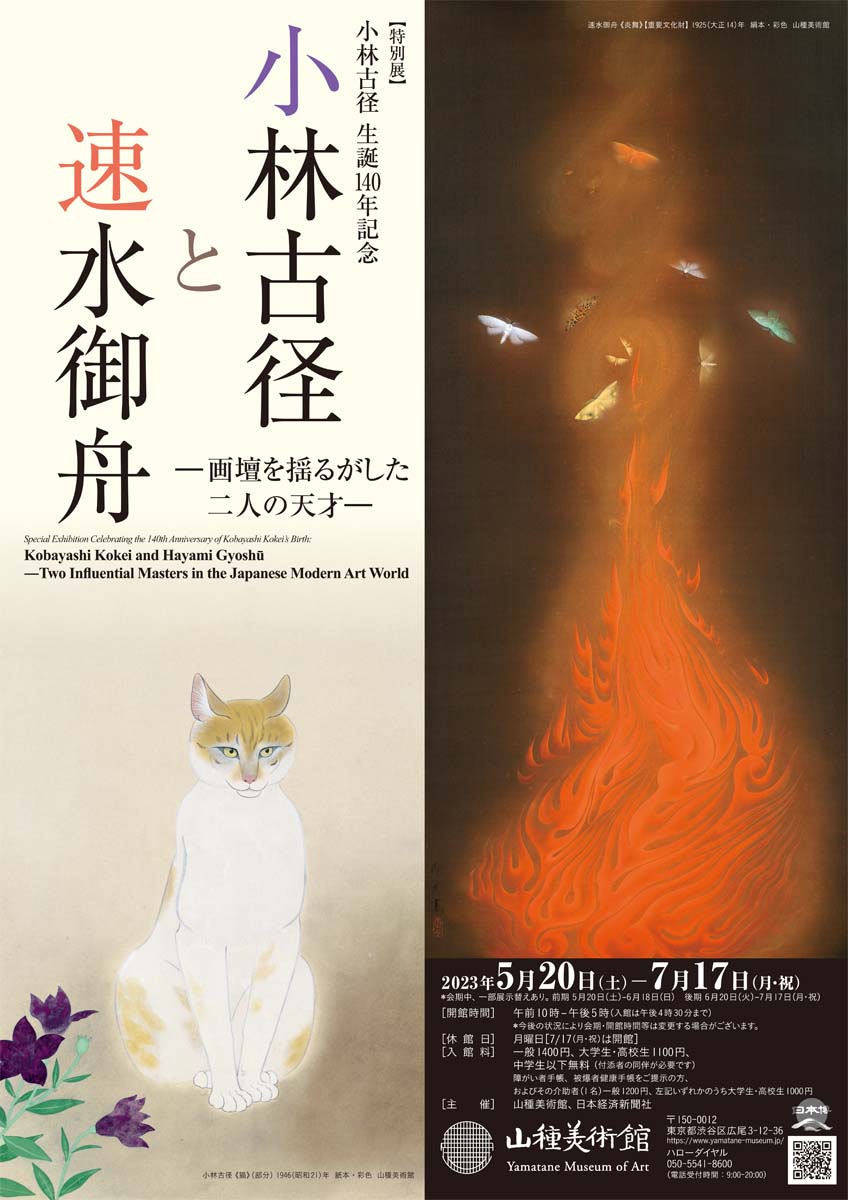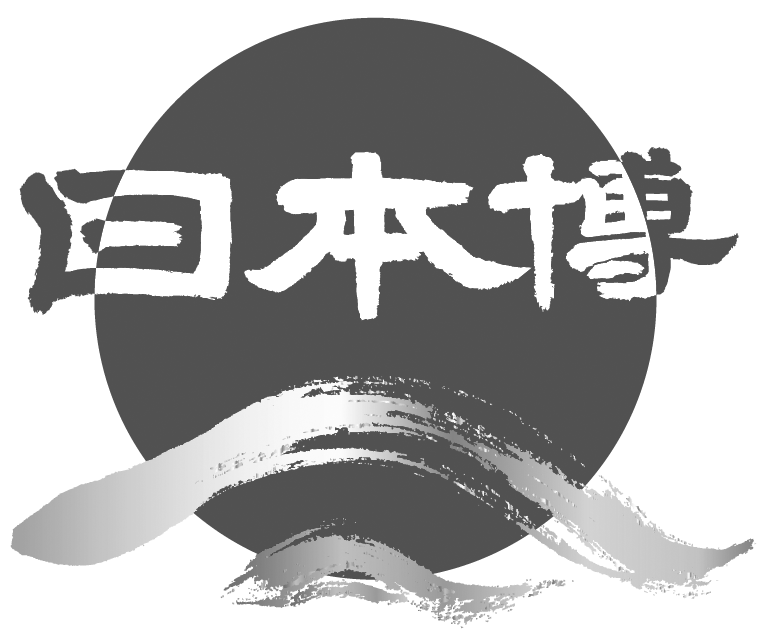Past Exhibition
Kobayashi Kokei and Hayami Gyoshū
―Two Influential Masters in the Japanese Modern Art World

20 May (Sat.) 2023– 17 July (Mon.) 2023
(Closed on Mondays, except for 17 July.)
Hours: 10 am - 5 pm (Last admission at 4:30 pm)
Admission Fees: Adults: 1,400 yen; University and high school students: 1,100 yen; middle school and younger children: free of charge; Disability ID holders and one accompanying person: 1,200 yen each (university and high school students: 1000 yen)
*Discount for those who are wearing kimono: Discount of 200 yen for adults
Organized by: Yamatane Museum of Art and Nikkei Inc.
Approximately 60 works in total are to be displayed.
Period of Display: ○: 5/20-6/18, ★: 6/27-7/17, ●:6/20-7/17/All other works: Displayed for the entire exhibition period
Exhibition Overview
Kobayashi Kokei (1883-1957) and Hayami Gyoshū (1894-1935) both left significant marks on the history of nihonga. Tracing their artistic careers, moreover, reveals many similarities in their work despite the eleven-year difference in their ages.
Kokei and Gyoshū both began by producing history paintings and paintings of the human figure. Both were active in the Inten (Japan Art Institute Exhibition), which was reestablished in 1914. Both changed their styles at about the same point, in the 1920s, and both shifted to a thoroughly realistic style based on detailed depictions. Both received support from the businessman Hara Sankei. Also, both found new horizons as a result of their experiences in Europe: Kokei, his eyes opened to the beauty of the line in Asian paintings, established his own distinctive style, while Gyoshū developed new artistic terrains, representations of the human figure and bird-and-flower paintings based on ink-wash techniques.
Kokei and Gyoshū had high regard for each other, while also enjoying a friendly rivalry. Gyoshū praised Kokei, the more senior artist, saying, “He walks straight ahead on the path he believes in.” Kokei, on his part, said of the younger Gyoshū, “When I think of my friend who was so passionate about art, I feel a great respect for him.” Their relationship was filled with mutual respect.
This exhibition, which commemorates the 140th anniversary of Kokei’s birth, presents masterpieces by Kokei, including Elysian Well (The National Museum of Modern Art, Tokyo), Hot Spring (Tokyo National Museum), and Scenes from the Legend of Kiyohime, plus the cream of Gyoshū’s work, including Dancing in the Flames (Important Cultural Property), and Emerald Mosses and Verdant Grass. They are joined by many gems by both artists, from their early through their late periods, including works that show these two artists’ interactions and related comments. Please enjoy following the pathbreaking careers of these artistic geniuses as they stimulated each other, were active in ways far ahead of their time, and influenced their contemporaries and later generations of painters.

Kobayashi Kokei, Cat
Yamatane Museum of Art
Hayami Gyoshū, Dancing in the Flames [Important Cultural Property]
Yamatane Museum of Art
Hayami Gyoshū, Emerald Mosses and Verdant Grass
Yamatane Museum of Art
Kobayashi Kokei, Scenes from the Legend of Kiyohime: Hidaka River
Yamatane Museum of Art
Hayami Gyoshū, Chinese Bellflowers
Yamatane Museum of Art
Free with Museum admission.
Conduced in Japanese by a museum staff at 10:30 - 11:00 a.m. every Wednesday.
Reservation is not required (first-come basis, please directly come to the entrance hall at 10:00)






